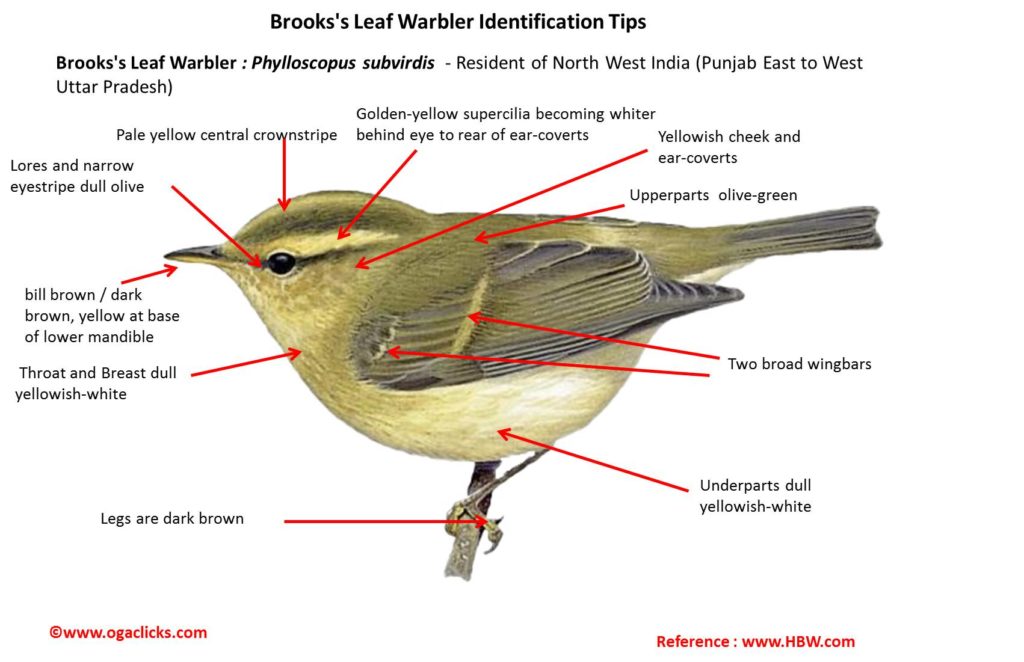Brooke’s-leaf Warbler

Brooks’s Leaf-warbler Phylloscopus subviridis
Etymology :
- Phylloscopus:Greek word phullon- leaf; skopos- seeker
- subviridis: Latin word for Greenish
Distribution in India: Winter visitor in North India .
Description: Size of 9–10 cm; wt. of 5–6 g. It is a small to medium-sized olive-green leaf-warbler with well-defined supercilium and two wingbars. It has indistinct pale yellow central crownstripe, well-defined golden-yellow supercilia meeting on forehead becoming whiter behind eye to rear of ear-coverts. The lores and narrow eyestripe are dull olive; cheek is yellowish, becoming tinged dull olive on ear-coverts. The crown except for median stripe and most of upperparts, including upperwing coverts are olive-green. The rump is indistinctly paler and yellow-tinged. The flight-feathers and tail feathers are brown, broad yellowish-white tips on median and greater upperwing-coverts with two broad wingbars. The throat and underparts are dull yellowish-white. In worn plumage, wingbars and underparts are whitish; iris is dark brown; bill is brown or dark brown, yellow at base of lower mandible. The legs are dark brown. Both thesexes are alike. The juvenile is similar to adult, but has upperparts browner, central crownstripe less well defined, underparts dirty white and tinged buffish on breast. It breeds in coniferous forest with spruce, silver fir and deodar and in mixed conifer and broadleaf forest with oak and holly.
Habitat: It is found between 2100 m and 2700 m in breeding season. In non-breeding season it is found in bushes, olive groves, plantations, orchards, gardens, thorn trees, including acacia groves, and roadside scrub; at lower levels in hills and plains
Food habits: It small insects and larvae. It forages alone or in pairs. It is found in non-breeding season in mixed-species flocks, often with other small Sylvia warblers and white-eyes. It feeds almost exclusively in middle and upper canopy of trees, particularly oaks and conifers, also in acacias.
Breeding habits: They breed in May–July. The nest is a ball of dry coarse grasses, lined with fine plant fibers and animal hair, on ground, usually on steeply sloping bank among rocks or under bush. They lay a clutch of 3–4 eggs.